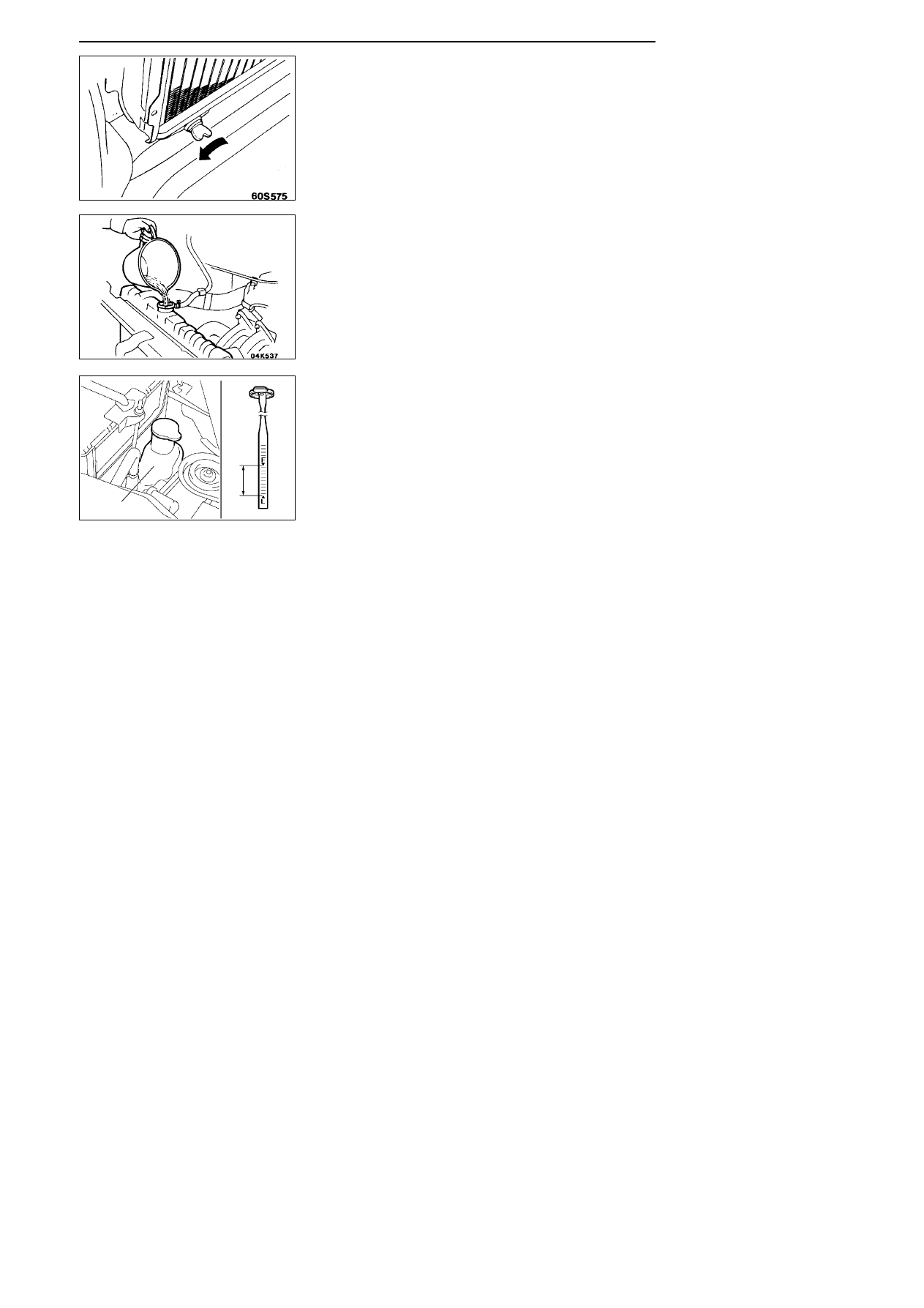Mitsubishi Lancer. Manual - part 53

PRE-DELIVERY INSPECTION --
Operations inside the
Engine Compartment
2-12
A11. CHANGE ENGINE COOLANT
(1) Stop the engine after it is fully warmed up.
(2) Add detergent to the engine coolant in order to flush the
cooling system, and start the engine.
(3) Loosen the drain plug, remove the radiator cap and
drain the coolant.
(4) Feed fresh water into the cooling system through the
filler port of the radiator in order to wash the cooling
system, and then tighten the drain plug.
(5) Drain the coolant from the reserve tank.
(6) Install the reserve tank.
(7) Depending upon conditions of operation, determine the
amount of long life coolant, antifreeze or antirust to be
added to the coolant.
Recommended antifreeze:
DIA QUEEN SUPER LONG LIFE COOLANT or
equivalent
Caution
Do not use alcohol or methanol anti-freeze or any
engine coolants mixed with alcohol or methanol anti-
freeze. The use of an improper anti-freeze can cause
the corrosion of the aluminium components.
(8) Fill the cooling system with soft water through the filler
port, and add long life coolant, if necessary.
(9) Fill the reserve tank with coolant.
(10)Install the radiator cap and the reserve tank cap.
(11)Recheck the engine coolant level after a road test.
Caution
When removing the radiator cap, be careful to blow
out steam and boiling water.
AC210258AB
Full
Low
Reserve tank